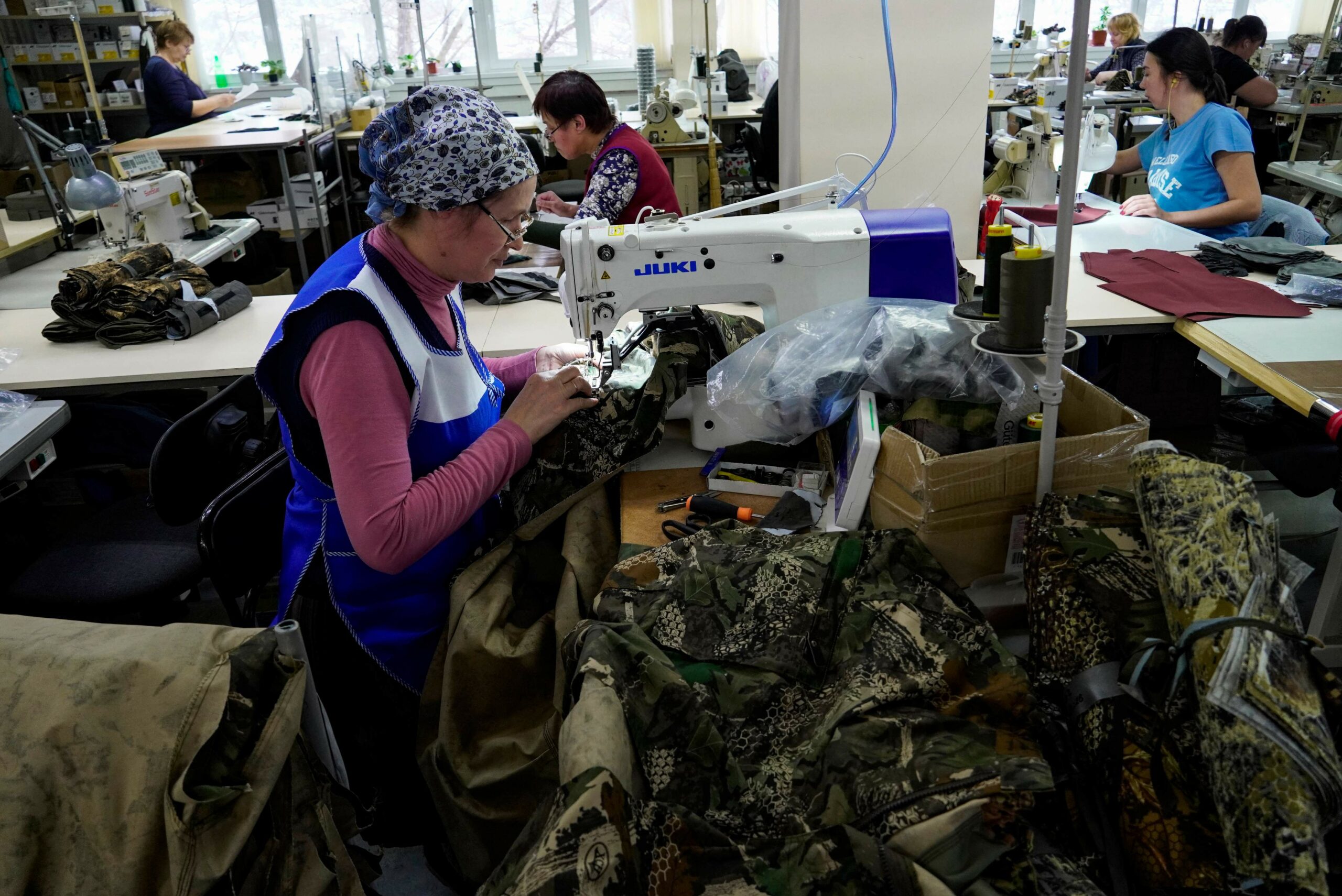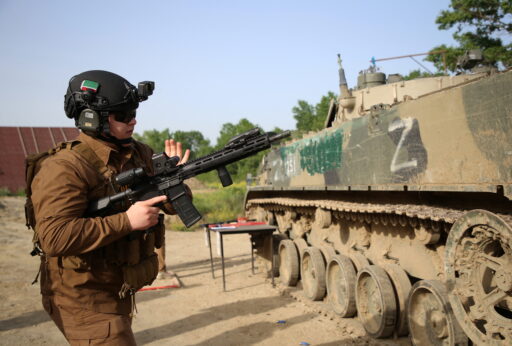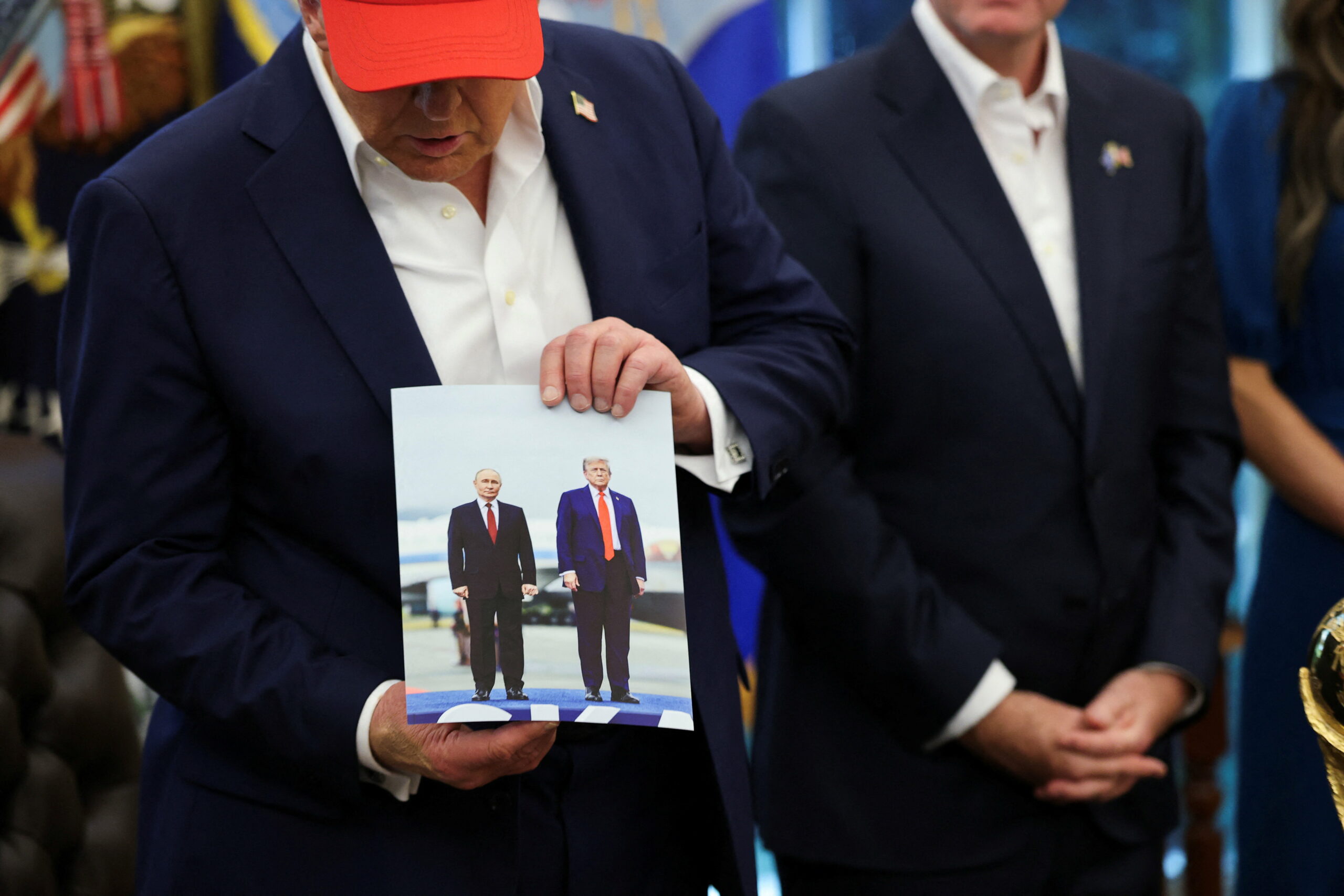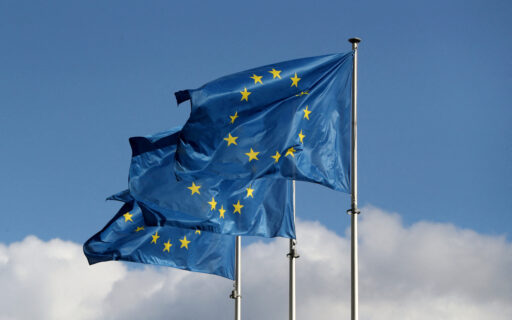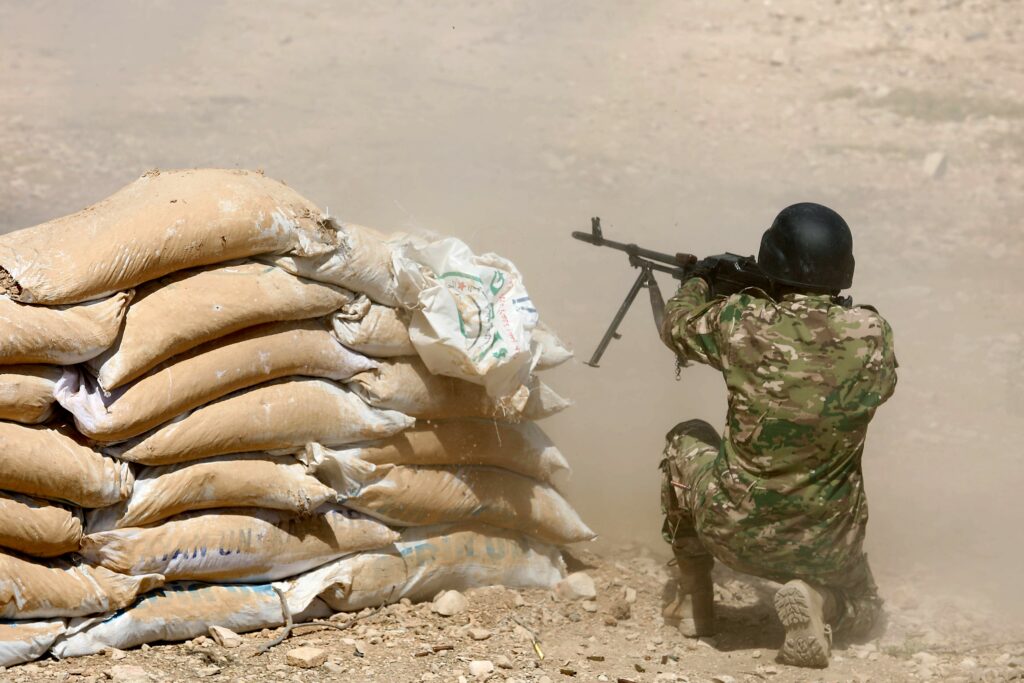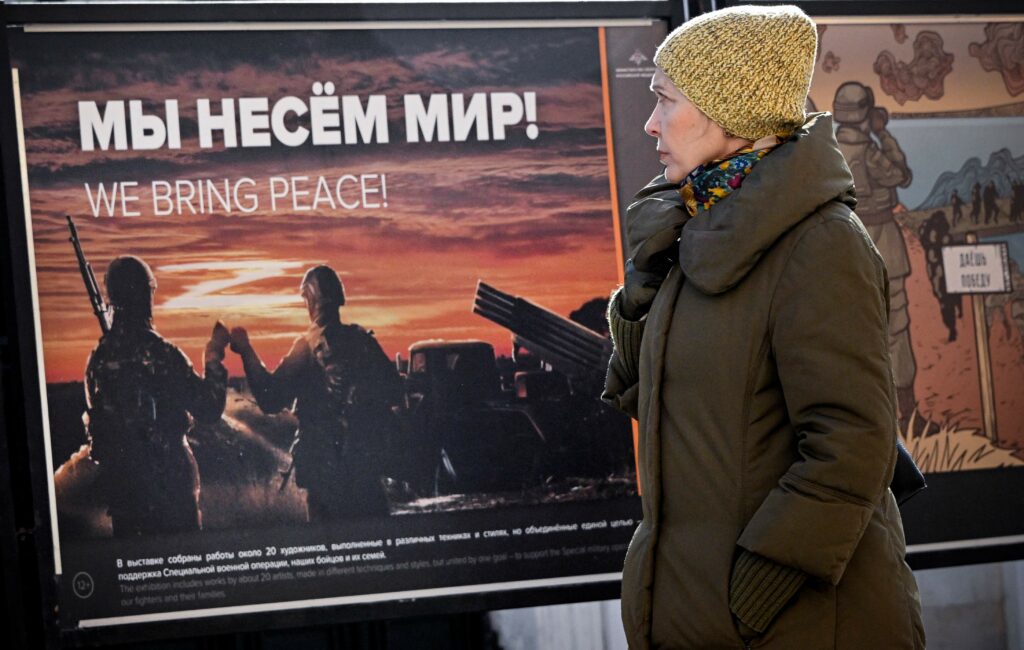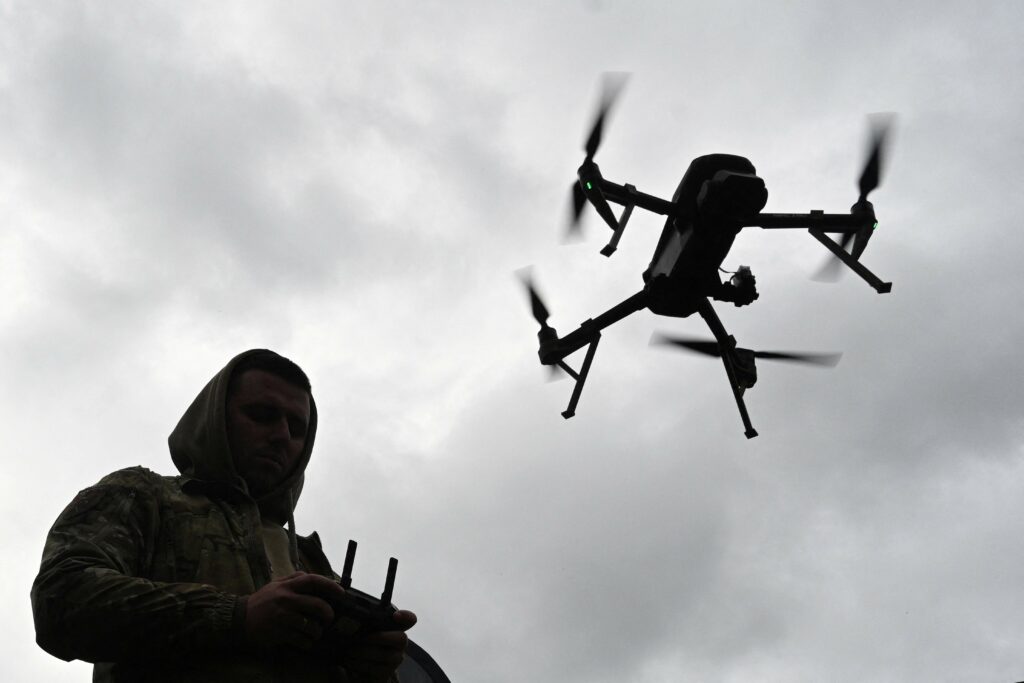The war in Ukraine has been a national contest to mobilize manpower, produce or secure materiel, and prevail through attrition since Ukraine’s summer offensive of 2023. While Russia’s military strategy has evolved, its primary structural advantage—a male population of approximately 66 million compared to Ukraine’s roughly 17.5 million, accounting for post-invasion emigration—remains the cornerstone of its theory of victory. With significantly more working-age men available for the front and evident signs of economic imbalances that have steadily worsened since mobilization in fall 2022, the sustainability of the regime’s approach hinges to a significant degree on its ability to maintain a standing army of nearly 1.5 million, rotate troops through deployments, and offset the inflationary effects of the war’s immense demand for working-age male labor.
In the strictest sense, there is no evidence yet of an inability to recruit enough men to fight. However, there is reason to believe that the trade-offs involved impose constraints on the conduct of the war, particularly because the economy has not truly been placed on a wartime footing. Instead, the massive spending and demand impulse triggered by the scramble to expand military production and voluntary recruitment has created a system of de facto resource rationing through preferential access to credit and other interventions. What began as a traditional Keynesian fiscal stimulus—spending creating demand for goods, services, and labor, leading to a burst of growth—has now morphed into cannibalization, the slow stripping of labor and resources from other parts of the economy needed to sustain or grow.
Accelerating Decline
Before the invasion, policymakers already faced a labor problem. The official labor force was declining by 0.2−0.3% annually, a figure that rises to 0.8% when measuring the working-age population aged 20−60. Available labor must also be adjusted to reflect pension reforms that have delayed retirement, inflating official statistics for working-age Russians, given that over 1 million working-age people die annually from chronic illnesses (mostly men), over 40% of Russians have multiple chronic conditions, and pre-COVID and pre-invasion, chronic illnesses accounted for 87% of all deaths. In 2010, nearly 76 million people were part of the labor force; by 2021, this figure had fallen to 73.8 million. In a contest of mass combat, Russia retains an immense structural advantage in its ability to dispatch men to the front against Ukraine, which has barely more than one-fourth the recruitable population (slightly augmented by total mobilization and a willingness to allow women in more combat or support roles). However, a large share of available men suffer from chronic illnesses or poor health, making them less than optimal for anything beyond a war strategy reliant on sheer numbers, an issue affecting both Russia and Ukraine.
Even with this numerical advantage, rates of change and qualitative implications of available data suggest a labor problem imposing steepening costs for Russia. Estimates must be taken with caution, but the U.S. think tank CSIS has calculated that Russian casualties, both dead and wounded, have reached 1 million. These losses are almost entirely working-age men, typically mid-career in their 30s and 40s, who earn significantly more from service contracts than from their civilian jobs. Seriously wounded individuals may rejoin the workforce but will require additional medical care and services, which are increasingly difficult to staff. Normally, three working-age men die for every working-age woman in Russian mortality statistics; among those aged 20−35, this ratio is now 4 or 5 to 1, a clear sign of the significant toll on the male population in their physical prime and typical family-forming years.
War creates labor bottlenecks because every soldier recruited for the front must be clothed, fed, armed, and supplied—a potent limitation for businesses, given the official unemployment rate of 2.25%. MinPromTorg estimates that manufacturing and value-added production, driven primarily by wartime industries since 2022, are short 1.9 million workers. The broader economy lacks hundreds of thousands more workers, including freight drivers, engineers, mechanics, and blue-collar laborers for sectors like construction. Duma members are now concerned about shortages of medical workers and teachers, and the Ministry of Internal Affairs is short over 170,000 men for its various security roles. There is thus a direct link between the intensity of front-line operations and labor shortages in the rear. Casualty rates vary monthly but typically range from 25,000 to 35,000, with periods of higher or lower rates based on publicly reported sources and estimates. If a general offensive remains the preferred military strategy, the state must recruit 30,000 men monthly to «break even,» sustaining army size while accounting for extraneous losses, health issues due to the often poor health of contract signers, and other factors.
The aggregate workforce in Russia has likely declined by approximately 1−1.5 million people since 2022, though the exact figure is difficult to estimate due to informal employment, shifting official methodologies for calculating employable individuals, and tightly held casualty information. The higher end reflects the underlying loss of working-age population due to Russia’s demographics, but these losses compound future challenges. The war is undoubtedly accelerating the workforce’s decline, even as more people are employed due to high wage pressures and paradoxical opportunities created by an otherwise weakening civilian economy. Based on birth cohorts, demographic relief for the workforce size is not expected until the mid-2030s. The aggregate decline of 20−40-year-olds able to work between 2012 and 2032 could reach 13 million, and the workforce will be significantly smaller in the 2030s, with or without the war. These conditions may be sustainable for a country on permanent war footing but are detrimental to the countless economic targets and import substitution goals launched by the regime to support the war effort.
On one hand, the Duma has made it harder to fire workers by imposing new regulatory requirements, aiming to prevent large layoffs in sectors like IT, which are exposed to a worsening recession in the civilian economy, with over 40% of surveyed companies considering layoffs. On the other hand, the regime is targeting the 15 million «non-working» individuals to funnel them into the formal labor force for crucial sectors, recognizing that reducing job losses alone is not viable with such low official unemployment. Together, these measures suggest limited capacity to recruit large numbers for the military beyond recent peaks, nor is there a plan to meaningfully address the growing productivity losses associated with front-line deaths and injuries.
Sustainability at What Price?
To make the war as palatable as possible, the regime’s preferred mobilization approach has been to outbid the labor market for manpower with huge signing bonuses, high wages, end-of-contract payouts, and large insurance payments for the wounded or killed. Reports highlight that these payments, worth millions of rubles, enable families to buy property or cars despite sky-high interest rates. From a sustainability perspective, what matters more immediately is the level of economic and political disruption the regime can tolerate, rather than its absolute ability to maintain current recruitment levels. This is where competition between military service and the civilian economy becomes critical, even as it creates perverse incentives for men to enlist.
The net effect of mobilizing a working-age male from Moscow or a major employment hub differs from that in poorer, less developed, less populous regions. Wartime service is more economically attractive the poorer a man is and the worse his economic prospects, a dynamic evident in 2022−23 with larger-than-expected increases in bank deposits in Russia’s poorer regions from wartime bonuses. However, when a soldier or his earnings return to Moscow, where the cost of living is high, the money does not significantly alter spending power. In contrast, when a family in Tuva suddenly receives several million rubles, the impact is transformative. Rather than positing an absolute recruitment threshold for unsustainability, it is more useful to consider how recruitment disproportionately destabilizes prices and living costs in poorer regions. Sudden surges in wages or spending power hit limits: there are only so many homes to buy or businesses to patronize locally.
Moreover, «labor» is not perfectly substitutable. A factory worker with decades of machining experience in Tomsk cannot easily transition to making lattes in Saratov or working as a tour operator in Karelia. Russia’s challenge lies more in shortages of specialized labor than in an aggregate lack of workers, though the latter is a significant, unavoidable problem. Beyond engineering or medicine, recent Ukrainian successes in operations within Russia or Russian-controlled territory raise questions about who is available to patrol, tighten security inspections, or secure supply chains for industries and the front. If the solution remains outbidding other potential uses of labor, this will exert upward pressure on wages, inflation, and business costs, despite a worsening outlook for the civilian economy. Ironically, these conditions, which pose immense challenges for Ukraine, also create opportunities for asymmetric tactics exploiting Russia’s vast size, complex domestic logistics chains, and lack of personnel for adequate security. Nearly 35% of the workforce is employed in harmful or unsafe conditions, according to Rosstat, and these jobs are critical to the war effort. There is a point at which militarization of the economy «by stealth» ceases to function politically when these roles must be filled and excess labor supply is exhausted.
The Worse, the Better?
Most perversely, a significant worsening of the civilian economy—already effectively in a recession that will be difficult to reverse—makes military service more attractive. The worse conditions become for civilian industries and employment, the more appealing front-line service appears. Signs of this dynamic are emerging, as some regions have reportedly begun reducing bonus sizes for contract soldiers. This could indicate that the «value of life» established by the labor market is declining, a grim reality that renewed interest rate cuts by the Bank of Russia cannot fundamentally alter.
A deteriorating civilian economy makes it easier to find willing volunteers or those so economically desperate that they view service as their best option. Schemes like the drone plant in Tatarstan’s Alabuga Special Economic Zone, which recruits Nigerians under the guise of vocational training, houses them in heavily monitored dorms, and pays them less, may help marginally but do not address the broader challenge for Russia’s industrial war effort. The question is not whether there are enough bodies for the front—there are, for the foreseeable future at current levels, especially as the civilian economy braces for reduced demand, investment, and growth amid persistent inflation. Rather, sustainability hinges on whether there are enough workers to maintain the military production needed for victory, deliver men and materiel where required, and sustain exporting industries—namely oil, gas, agriculture, and coal—to prevent a severe hit to the ruble.
Investment in fixed assets—factories, buildings, infrastructure, and capital goods—continues to rise despite the collapse of broad economic growth. The war is consuming increasing volumes of capital, diverting resources from other sectors and creating demand for specialized labor that does not exist. Russia’s trade surplus, which supports the ruble and financial stability, is now only $ 9 billion monthly and could decline further if oil prices fall to the low to mid-$ 50s per barrel for an extended period. Moving averages show slowing production growth for military inputs, particularly metal products. While growth persists, inflation-adjusted trends indicate that sustaining significantly higher output will be challenging.
The worse the civilian economy fares, the better for military recruitment—but not necessarily for the industrial economy’s capacity to produce more drones, missiles, or other military equipment. Current production and labor demands are slowly breaking the economy. These breakages can be addressed if the regime fully militarizes society, but it cannot magically create tens of thousands of new engineers, programmers, construction workers, or medical personnel. What began as a Keynesian stimulus boosting output and GDP has become a painful process of cannibalization, consuming labor and resources from elsewhere to feed the war.
The escalation of attacks on Ukrainian civilians is perhaps best understood as a strategy to offset limitations on Russian forces’ maneuverability at the front, as both sides adapt to their constraints and race to innovate in unmanned systems. The current intensity of fighting is driving the Russian economy into the ground but can be sustained through the typical summer and early fall offensive season. Doing more, however, appears far more difficult, increasingly constrained by external factors like commodity prices, over which Russian policymakers have no control. Should Ukraine’s retaliatory capabilities improve further, Russia’s industrial base will face additional constraints that could undermine the regime’s otherwise robust capacity to find men to fight.
